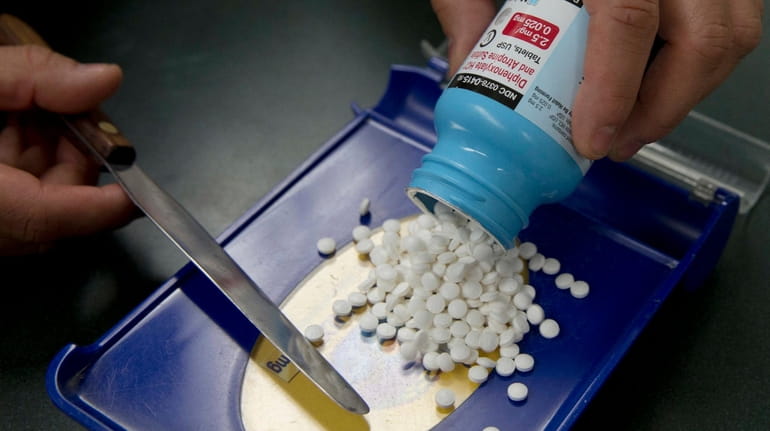The too-high cost of prescription meds

The prospect of paying a mind-boggling cost for prescription medication month after month is frightening and unsustainable. Credit: AP/Rich Pedroncelli
For a moment, let's take the prescription drug debate out of the halls of Congress and into the homes of those most impacted: patients and those who love them.
When a loved one is ill, there's plenty to worry about. But one of the greatest concerns sets in after a physician prescribes a medication — to treat arthritis, or asthma, or diabetes, or in the case of one of my family members recently, life-threatening blood clots. That's when a caregiver, already shaken by the diagnosis and all that lies ahead, heads to the pharmacy to pick up — and pay for — the drug.
There’s the all-too-brief hope that insurance will cover the cost. Then, the shocking reality sets in: a price tag of $200, $300, even $500 a month, after insurance, especially for brand-name medications without a generic version.
The prospect of paying such a mind-boggling cost month after month is frightening and unsustainable, and leaves too many people making the unthinkable choice between protecting their health and feeding their families.
Sometimes, there are other, occasionally hidden alternatives, even discounts or price cuts to be found. For the blood thinner my loved one needed, for instance, there’s a copay card offered by the pharmaceutical manufacturer. Neither doctor nor pharmacist told anyone in my family of the option; it was one we discovered on our own. With an Internet search and a phone call, a $350-a-month medication turned into — poof! — a $10 drug.
How is it possible that the only way to secure a lifesaving drug at a reasonable price is through a Google search for magic tricks? And what about the millions of people who don't know how or where to look?
Such trickery is not a legitimate answer to the drug price mess, especially when coupons and copay cards come with their own complications, such as how they're counted — or not counted — toward a deductible. And in the complex world of setting drug prices, everyone pays the high cost one way or another — whether through sticker prices, premiums, hospital bills or even taxes.
In all of the bickering about President Joe Biden’s Build Back Better effort, it’s easy to get lost in the politics and forget the real consequences of intransigence. But within Biden’s plan are meaningful ways to slash drug costs for good, including a proposal to allow federal officials to negotiate the price of medications under Medicare, with the resulting lower prices potentially carrying over to the commercial marketplace.
It's sad but unsurprising that such common-sense reform that could have an enormous impact on vulnerable families, particularly seniors, is stuck in the ugly Washington muck. Rep. Kathleen Rice bizarrely voted against the provision last month, even as most of her constituents support it. And key Senate Democrat Kyrsten Sinema spent the last month seemingly opposed to the reforms, refusing to commit to even a watered-down version.
The behind-the-scenes beneficiaries of such inaction? Campaign coffers, as pharmaceutical executives and political action committees send their thanks in the form of check after check.
But every time Sinema and other representatives receive thousands of dollars from Big Pharma, another family is paying thousands of dollars a year just so their loved one gets the drug they need.
So, patients and their loved ones are left with impossible, horrific dilemmas unless they — or their representatives in Washington — find a way to pull a rabbit out of their hats.
Columnist Randi F. Marshall's opinions are her own.

